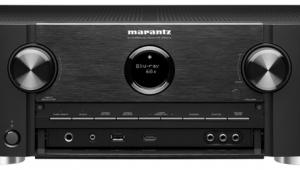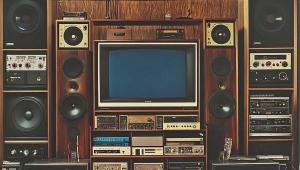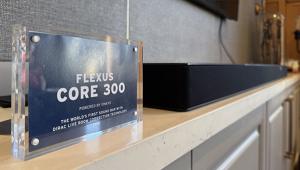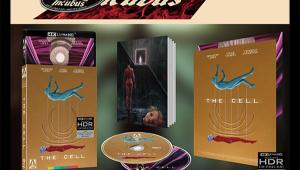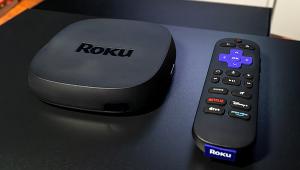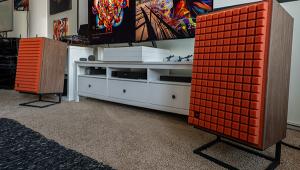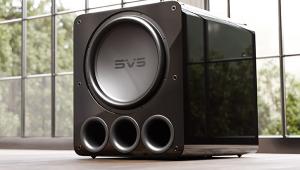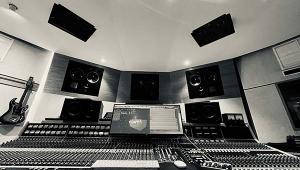The ESS Sabre 9016 DAC in Yamaha and Pioneer recievers and processors like the CX-5100 are superior to those in the Marantz.
Marantz SR7010 A/V Receiver Review Page 2
 Pre-Atmos movie viewing included The Calling (Dolby Digital), with Susan Sarandon as a small-town detective trailing a serial killer. The opening music includes a church bell; this triggered the Dolby Surround processing mode into action, which derives faux-height effects from non-Atmos surround and stereo soundtracks. The height enhancement gave the tolling of the bell an extra eeriness and made the rest of the music un-speaker-bound. I liked the feeling.
Pre-Atmos movie viewing included The Calling (Dolby Digital), with Susan Sarandon as a small-town detective trailing a serial killer. The opening music includes a church bell; this triggered the Dolby Surround processing mode into action, which derives faux-height effects from non-Atmos surround and stereo soundtracks. The height enhancement gave the tolling of the bell an extra eeriness and made the rest of the music un-speaker-bound. I liked the feeling.
As I marched onward into Atmos territory, San Andreas (Dolby Atmos/TrueHD) challenged the receiver’s amp with effects spread among all nine speakers. The height effects don’t start until a half-hour into the film. Why no height info in the opening choral music? In the car crash? In the first appearance of the helicopter? I guess the mixer was waiting for the first earthquake— and then the soundtrack didn’t disappoint, lofting the tinkling of a high-rise restaurant’s broken glass above the main channels. Which leads to an aesthetic question: Should mixers withhold height effects until a movie ramps up to its dramatic peaks? Or should height effects be context-specific and used in any scenes where they would correspond to images? I want Atmos all the time; maybe that’s just me. In any event, the Marantz ran all its channels at aggressive levels without breaking a sweat.
I’d previously auditioned The Gunman (Dolby Atmos/TrueHD) in 5.1, but this was my first listen to the Atmos soundtrack. Height effects graced everything from ethereal music in a love scene to a bullfight. If I seem to be obsessing about the height channels, that’s not to imply that the Marantz wasn’t delivering dialogue and surround effects with equal aplomb.
My millionth consumption of the 2014 Dolby Atmos Demonstration Disc (Dolby Atmos/TrueHD) suggested that Klipsch’s Atmos-enabled speakers, here heard for the first time, not only provided excellent height effects, but did it without my having to boost the height-channel levels for an effective result, as had been the case with the Pioneers. The Audyssey room-corrected levels were sufficient to bathe me in jungle rain, dazzle me in the Dolby logo sequence, and plunge me into the height wonderland of the animated child-maestro clip. I’ll cover this in more detail when I review the Klipsches.
Back to Woodstock
The Steady as She Goes CD is the hybrid electric-acoustic work of a latter-day Hot Tuna, beautifully recorded in all its stringed glory at Levon Helm Studios in Woodstock, New York. While the Flat and Reference modes of Audyssey MultEQ XT32 offered slightly better imaging than the receiver’s un-room-corrected sound (with Reference bringing out voices just a little more), most timbres were in the same ballpark, with no worrisome tradeoffs. I preferred straight room-corrected stereo to faux-height Dolby Surround; imaging was denser when the Paradigms were operating alone than when the Klipsch add-ons assisted. Jack Casady’s brief but tasty bass solo in “A Little Faster” showed how well Audyssey handled the sub crossover and EQ. The Marantz truthfully conjured the distinctive vocal timbres of Jorma Kaukonen and Teresa Williams.
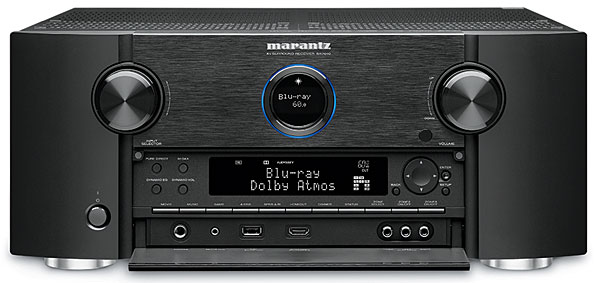
By the time I got to Madeleine Peyroux’s Half the Perfect World CD, I had decided that switching from the Pioneer SP-EBS73-LR Atmos- integrated speakers to the Klipsch add-ons made me less comfortable with Dolby Surround. Klipsch’s stronger height effects, at least as automatically balanced by this incarnation of Audyssey, made the Dolby height-enhanced post-processing mode unsubtle. It was “too all over the place,” I complained to my notebook, and it undermined the album’s jazzy intimacy. Larry Klein’s understated production worked best in stereo. Switching from room-corrected 2.1 mode to direct 2.0 faintly blurred the imaging of Peyroux’s velvety mezzo-soprano, though the direct mode was slightly better in extreme off-axis positions.
Dvořák’s Requiem, with Antoni Wit leading the Warsaw Philharmonic Orchestra and Choir, came on a Naxos Blu-ray Audio disc (DTS-HD Master Audio). The 5.0-channel 96/24 soundtrack spread the choir and vocal soloists evenly across the three front channels, not understating the center, as so many multichannel mixes of classical music do. (What’s the use of mixing in multichannel if you don’t make full use of the medium?) Here most of all, I appreciated the Marantz’s midrange resolution, as it reproduced attractive vocal and orchestral tone color suspended in a believable space.
The Marantz SR7010 is a state- of-the-art mass-market receiver with future-proof Dolby Atmos, DTS:X, and Auro-3D surround decoding (assuming you install all the updates). Considering its price point, readers with speakers more demanding than mine will expect extra power—and I’ll reiterate my advice to read the Test Bench measurements with care. Audyssey MultEQ XT32 is a big plus. It takes the uncertainty out of room correction—in any mode, you’ll likely get good results—and it’s worth the extra licensing cost.
If the distinction between Dolby Atmos 5.1.4 and 5.1.2 is as big a deal as I think it is, this nine-channel receiver will soon have competition, and much of it at lower prices. I’m giving the Marantz a value rating of five stars because it was surprisingly versatile and always satisfying. But I expect it to be joined, and possibly surpassed, by other nine-channel receivers. How will a wider frame of reference affect my retroactive judgment of this receiver? Without a crystal ball, it’s hard to say. The Marantz is only the second Atmos 5.1.4 model I’ve reviewed. But the next chapter in the evolution of surround receivers will be an interesting one indeed.
- Log in or register to post comments


Is this true? I actually just ordered both, believe it or not, and plan on comparing them.
The sr6010 came today and I am loving the social network soundtrack on it. Going to see how it does on a movie later tonight.
Got the aventage 2060 coming tomorrow. Can't wait to see how these two compare. That new yamaha stuff is fire.

How did the the aventage 2060 and the marantz sr6010 compare? which one did you keep and why?
I find myself facing a similar dilemma

How did the the aventage 2060 and the marantz sr6010 compare? which one did you keep and why?
I find myself facing a similar dilemma

Pioneer? They have been using the same faulty firmware chips for the last 5 years. I would not suggest Pioneer to anyone. I have and SC 57 that's absolutely useless without a $600 repair. They've known about it and CONTINUE to use the same chip.

I just read your review of the Marantz SR7010 receiver. I was particularly intrigued by your described usage of the Klipsch RP-140SA Atmos speakers. I am writing today to ask you about using them along with the Paradigm speakers that you also have in your system.
I run a 5.1 channel system, with the 5 main channels all consisting of Paradigm Reference Studio Series (version 4) speakers. The main L/R are Studio 40s, the centre is a CC-690, and the surrounds are a pair of Studio 20s.
Can you please tell me more about your placement of the Klipsch speakers? In photos, it looks like they are intended to be placed on top of the main L/R and surround L/R speakers. It also looks like they are meant to be placed on a flat surface and, as we both know, the Paradigm Studio speakers' cabinets have curved tops. I thought this would preclude proper placement of Atmos modules, like the Klipsch RP-140SAs. Do you have them sitting on top of your Studio 20s? If so, did you have to do anything special to place them securely? Does the "hump" on the top, front side of the speaker, above the tweeter, affect the angle of the Atmos speaker, if placed on top of the Studio speaker? If so, did you do anything to correct this?
If you do not have the Atmos speakers placed on top of your Studio 20's, how and where do you have them placed? On separate stands?
In either case, would it be possible for you to share some pictures of your setup?
Also, can you comment on the sound quality of the Klipsch speakers, and how well they blend with the Paradigms?
I'm not very handy, so I haven't seriously considered installing in-ceiling speakers for Atmos. As I mentioned before, I thought the shape of the Studio speakers' cabinets would preclude proper placement of Atmos modules, like these Klipsch units. These perceived limitations had me thinking that an upgrade to an Atmos capable system would have to wait until I could afford to purchase all new speakers, but your article has given me hope that there may be an easier, less costly option, without sacrificing too much sound quality.
I know I'm asking for a lot of information, but if you could spare a few minutes to share what you've learned about the Klipsch Atmos speakers, it could have a big impact on my planned upgrade path.
Thank you very much for your time and consideration. I always enjoy reading your articles. Please keep them coming!
Sincerely,
Trevor


That helps a lot, Mark! Thank you. I look forward to your review of the Klipsch speakers.

Hi Mark,
Thanks for your detailed review of the Marantz SR7010.
Could you please post the full test bench results for this unit so that an objective comparison can be made with the other av receivers you have reviewed.
Also, I was wondering whether you got a chance to test or use the phono input on this receiver?
If so, is the phono stage worth using or would you be better off using a separate phono pre-amp?
I'm considering purchasing this amp but am concerned about the low phono s/n ratio of 74 dB quoted in the manual. For comparison, here are the phono s/n ratio numbers for the main contenders:
Denon AVR-X6200 - 74 dB
Yamaha RX-A3050 - 95 dB
Sony STR-DA5800ES - 90 dB
Onkyo TX-RZ900 -80 dB
I know that there are other factors that affect the sound quality of the phono stage but these figures are concerning to me.
I wish to use the av receiver predominantly for music but want the functionality of an av receiver over a 2 channel amp. Any thoughts?
With thanks and best wishes.
Michael

I’ve used the Phono amp on my SR7009 (which is the outgoing model and likely the same hardware) and there’s nothing wrong with it, just a little boring. My “little bear” tube pre-amp is noisier, but more dynamic. You could use the built-in pre to start with, but I’d recommend trying out something else if vinyl is important to you – that would go for any receiver. The pre-amp really does make a difference in the sound you get.
Also: that SR7009 can be had for half what the SR7010 is going for, and is only lacking DTS-X (will this ever matter, who knows?) HDMI 2.2 (so get a switch). I’m running 7.1.4 Atmos through mine, which is a neat trick.

Thanks mark, i liked this review, finally i was able to see the calculation with 7 channels driven. I also saw the review of the mm7055 which states 108 watts per channel for 5 channels driven. (i have the mm7055 from my previous set up so i going to use it to power my 2 fronts and center speakers) and keep the 4 surrounds and 4 dolby atmos speakers on the sr7010) leaving 2 channels open in the mm7055 so i could add 2 height speakers if i decide to do the auro 3d. i see this marantz only could drive 11 speakers but it could have 13 speakers and according to the sound mode it will drive 11 speakers if i keep the pa m7055. i do not need too much watts that is why i know they will tell me to get a rotel, emotive or outlaw pa, i live in an apartment so i do not need to much besides i only using this for my living room and not a home theater room in that case i will get a more powerful pa.so in your opinion this will be a good set up? at least i will have a little bit of more power than using the sr7010 alone right?

Mark, Thanks for the article. I recently purchased the SR7010 and have an Oppo BDP-83 (Non SE) and am having an issue with 4.0 audio from bluray's, DTS-CD & DVD-Audio's. The receiver shows 4 speaker playback but I only get the front channels. Pink Floyd's Immersion bluray disc is a good example, switch to 4.0 and only the front channels work, switch to 5.1 all the speakers work. If I hook up my sons Samsung bluray everything works fine. So a another player works indicating the Oppo is at fault.
Since you used a BDP-83 in your review I was wondering if you had a similar issue.

I own the Marantz 7200 and use Paradigm Active Studio 40's for bed channels and Studio Active 20;s as height channels in an Auro 3D setup. I think you will find auromatic uses the height channels a lot more with movies than with atmos. I noticed your preference for 2 channel stereo over atmos upmixed music. The auromatic upmixer makes both dolby and 2 channel sound flat and uninvolving in comparison.The Paradigm Studio Active 20's are about the same six=ze as your Studio 20's v4. I have mine mounted on tall stands like a DB would use and they work fantastic. I think you would be very happy if you had studio 20 v4's for height channels as well.











